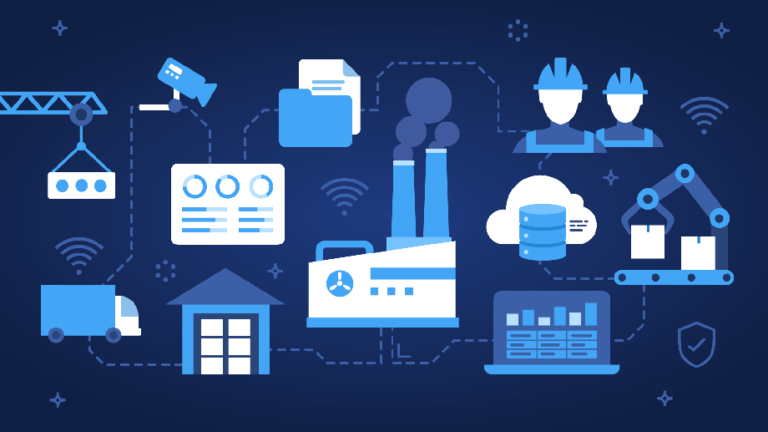The Internet of Things (IoT) is no longer a new trend; it is well-established and growing.
Considering that 21.5 billion devices are expected to be connected by 2025, IoT solutions are now present in every industry sector and market segment. It has unmistakably signaled a fundamental shift in the IT industry. Now, billions of internet-connected gadgets, ranging from sophisticated industrial machinery to children’s toys, share data to direct their operations.
Consumer demands are evolving toward bright items due to living in a society where the internet predominates. Look at smartwatches, robot vacuums, electronic pet collars, intelligent trackers, and similar devices.
We all anticipate that our gadgets and “things” will be able to connect to the network, function intelligently, and be reachable from a distance. This substantially increases the effectiveness of our goods.
What does IoT Ecosystem?
The Internet of Things consists of two main parts. The first is a physical entity or “thing” that you want to make intelligent by adding connectivity. The embedded system, which offers this connectivity, is the alternative.
Although the latter portion may appear straightforward, it entails a complicated system that may include numerous sensors, actuators, protocols, a data management layer, and more.
Take a connected doorbell as an example. It takes several different parts to recognize when someone is at the door, even when the bell is not rung, and to show the user this information via speech or video.
The IoT solutions and ecosystem are also further involved when the lock is opened remotely.
Five components of IoT
- Actuators and Sensors
The core of the Internet of Things network consists of sensors and actuators. In an IoT platform, sensors are implanted and connected to assets as a physical micro appliance. These sensors are in charge of acquiring information to communicate signals or instructions to the actuator.
The actuator then reacts to the signal or order and “acts” or causes something to happen by this signal. For instance, your office might utilize an intelligent air conditioner for a particular temperature.
Sensors are utilized to keep track of any temperature changes in the office setting.
- Connectivity to Protocols and IoT gateway
IoT is a network of devices, sensors, clouds, and actuators; each component must be connected to the others to interpret data and subsequently carry out an action. In the intricate IoT ecosystem, connectivity is the second component of the jigsaw.
Once the sensors have acquired the data, it must be transported on a media. In other words, a communication channel between the sensors and the cloud is required.
To get to the cloud, incoming, unprocessed data from the sensors must travel through gateways. Gateways translate network protocols to ensure that all networked devices can communicate with each other without interruption.
Additionally, gateways provide security by shielding the network from intrusive and harmful attacks. As the data passing through it is secured by the most recent encryption techniques, it can also be seen as an additional layer of protection.
- IoT cloud
The data flow to the cloud after passing through the IoT solutions protocols and gateway. IoT platform has various parts brought together via the cloud, a high-performance computation and storage ecosystem utilized for processing and data storage.
Data is filtered, handled, and stored in the cloud. In reaction to the data gathered and signals received, the information is then used to give real-time analytics for prompt decision-making regarding what action should be taken.
- Data management and IoT analytics
Despite being a little word, data has tremendous power and may profoundly impact any business. The enormous volumes of analog data are analyzed using IoT platform Analytics.
For instance, this could involve identifying the KPIs for a particular application where one could be interested in viewing faults or abnormalities in real time.
Once discovered, a quick response would be needed to prevent unwanted outcomes. In other words, analytics turns raw data into insightful knowledge that is then interpreted or examined to guide decision-making.
Numerous situations call for the usage of intelligent analytics. The primary responsibility is to assess the situation and make a judgment in light of it.
- End-user devices and user interface
The user interface is the visible element that is simple to use and under the IoT user’s control. Here, a user can modify the system’s settings and take control of it. It is easy for users to interact with this element of the IoT ecosystem.
Users can communicate with the system directly through the device or remotely through laptops, tablets, and cellphones. Users can share their “things” using innovative home systems like Amazon Alexa or Google Home, etc.
Conclusion
The Internet of Things (IoT) is a mature and expanding phenomenon rather than a recent craze. By 2025, 21.5 billion gadgets are anticipated to be connected. There are now billions of internet-connected devices, ranging from toys for kids to industrial machinery.
You can also use akenza.io, a self-service IoT platform that lets you build useful Azure IoT Hub products and services. Akenza.io is confident in its ability to help organizations develop IoT solutions by considerably reducing the workload and complexity.


Comments are closed.